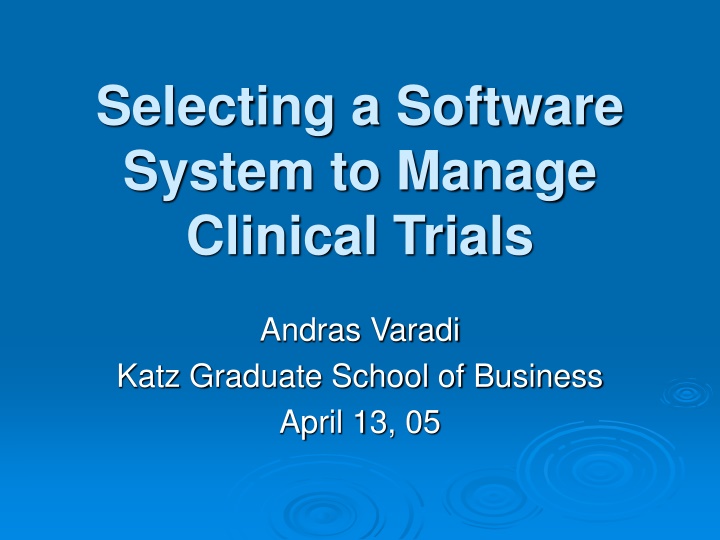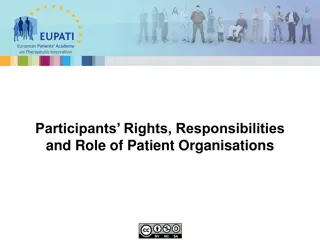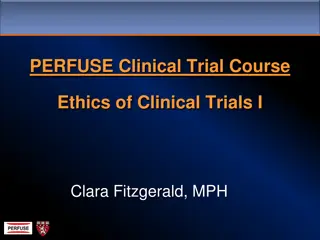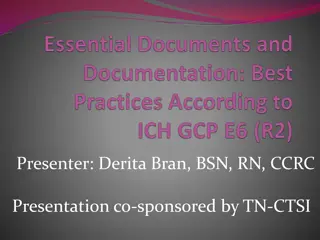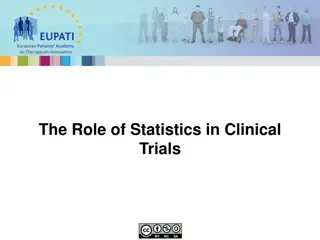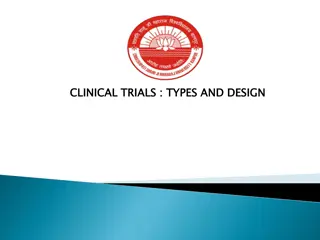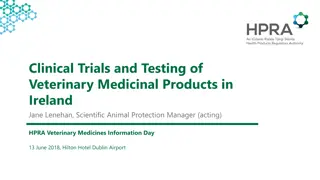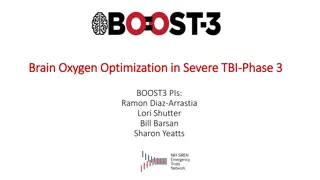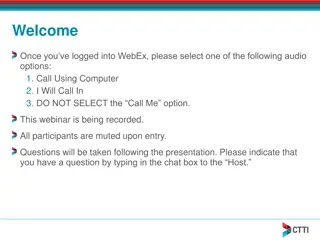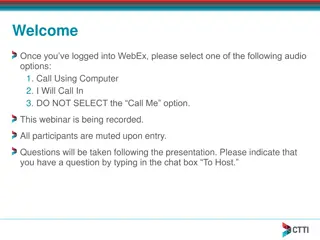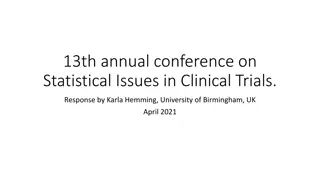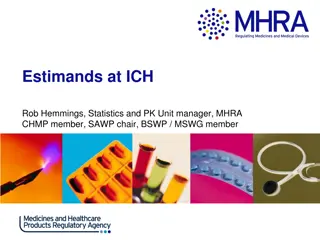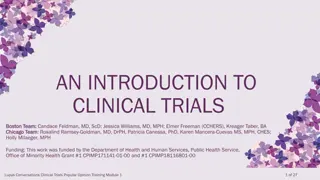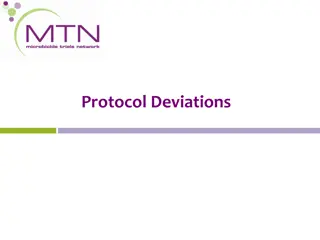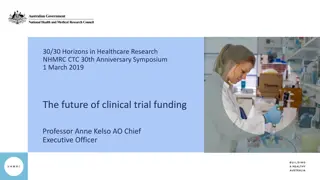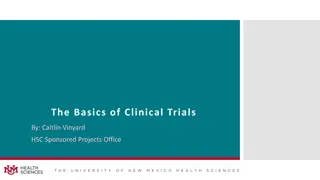Selecting a Software System for Clinical Trials Management
Background organization at Lupus Center of Excellence, University of Pittsburgh. System Analyst role supporting research activities. Lupus overview, common myths correction, and details about the Lupus Center. Clinical trials information and the need for a system to manage trials and data. Detailed discussion on the CTMA software system for Clinical Trials Management.
Download Presentation

Please find below an Image/Link to download the presentation.
The content on the website is provided AS IS for your information and personal use only. It may not be sold, licensed, or shared on other websites without obtaining consent from the author.If you encounter any issues during the download, it is possible that the publisher has removed the file from their server.
You are allowed to download the files provided on this website for personal or commercial use, subject to the condition that they are used lawfully. All files are the property of their respective owners.
The content on the website is provided AS IS for your information and personal use only. It may not be sold, licensed, or shared on other websites without obtaining consent from the author.
E N D
Presentation Transcript
Selecting a Software System to Manage Clinical Trials Andras Varadi Katz Graduate School of Business April 13, 05
Background Organization: Lupus Center of Excellence, University of Pittsburgh My Position: Systems Analyst: Support Research Activities Develop & Maintain IT infrastructure
Lupus - What is it? Official Name: Systemic Lupus Erythematosus Autoimmune Disease: The immune systems turns against itself. Immune response without any reason. It can attack ANY organ system (lungs, heart, skin, blood, etc.) It is incredibly difficult to diagnose. It is caused by a combination of genetics, hormones, environmental triggers.
Lupus - Continued Correction of Common Myths About Lupus: Lupus is contagious (FALSE). Lupus is a form of cancer (FALSE). Dogs can get Lupus (TRUE). Who gets lupus? 1.5 Million people in the US have Lupus. 10:1 Women 3:1 Minorities
About the Lupus Center Part of the Department of Medicine, University of Pittsburgh Two main divisions: Clinical Treat Patients Clinical Research Laboratory Laboratory Research Develop new tests, medications, vaccines, etc. Funding: University of Pittsburgh NIH Lupus Foundation, Inc. Etc.
Clinical Trials - What are they? Structured Experiments: New Drugs New Treatments New Diagnostic Techniques Sources: Independent (internal) projects. Projects commissioned by pharmaceutical companies, the government, etc. Data: Every project generates a large amount of data. There are about 20 active projects at any given time Need: System to manage all trials & data.
CTMA Software System CTMA - Clinical Trials Management Application Developed by UPMC Oncology Informatics. Originally intended for use in Cancer Research. Other Details: Extensive IT infrastructure: servers, databases, etc. Dedicated programming and database design staff. They are willing to modify system to work in Lupus Research. Free License of Software, only cost would be server and database services.
BILAG Software System BILAG - British Isles Lupus Assessment Group Standalone Microsoft Access Application Expensive License fees - limited # of users. Can only work on MS Windows computers. Software was designed for Lupus Research. Limited tech support services.
Internally Developed System Develop clinical trials management software internally. Lupus Center has limited IT staff and IT infrastructure. Development can take a long time. Software could be specific to the Center s needs. ( Only we know exactly what we need ) Center could establish standards for such systems. There would be no licensing fees. All systems and data would remain intellectual property of the Lupus Center
Benefits Operational Data Management: Increase Speed Measure Entry Pace Reduce Errors Research: Always up to Date Easy Access to Data Improved Reliability Human Resources: Allow Task Specialization Centralize Data Management Reduce Stress on Study Coordinators Technology: Implementation: Experience Required Staff Speed Long-Term: Interface with other Systems Outside Support Regular Updates
Costs Economic: Financial: Infrastructure Costs Licensing Fees Recurring Costs Transition: Data Errors Data Management Process Redesign Down Time HR Related: Additional Employees Resistance Training
Opportunities - Economic Financial: Easier Licensing (of lupus diagnostic technology) New Grants Provide Data Management Services (to other labs) Operational: Research: Collaboration Cross Sectional Research New Studies Data Management: Clinical Integration National Standards Development
Opportunities - Economic (cont.) Technology: Implementation: Data Clean-up Database Infrastructure Expansion Process Redesign Long-term: Scope Expansion Spin-off System Development
Risks - Economic Financial: Budget Overruns End of Grant Funding Opportunistic Upgrading/Support Fees
Risks - Operational HR Related: Resistance from Employees Turnover (employee) User Mistakes Research: Data Misinterpretation Inconsistency in Analysis Data Management: Data Loss/Corruption Process Bottlenecks Security Breach
Risks - Technology Implementation: Platform Conflicts System Uptime/Downtime Transition Process Errors Long-term: Scalability Issues Software Bugs Technical Support
Why Such a Strong Result? CTMA Software System is strongly preferred! Result is not a surprise. Reasons for large difference in preference: Low cost due to lack of license fees. Doesn t require expansion of IT staff or infrastructure. System created by experienced programmers. Vendor can provide support services, also for free. System is highly expandable. System works on any platform (Windows, Mac, Other) Etc.
Ways to Improve the Model Inconsistency: Reduce inconsistency in ratings. Acceptable limit 0.1 or 1? Sensitivity Analysis: Find out why it doesn t work. Rating bias: Do pair-wise comparisons with a group of people, based on consensus. Include actual $ amounts for cost nodes instead of estimates.
Beneficial Outcomes of Project Considered issue in a structured way. Quantified actual benefits and drawbacks of all three systems. Discovered (thought of) issues not considered previously. I can present my bosses with a structured justification for my decisions. Before, all I could was to state my opinion.
